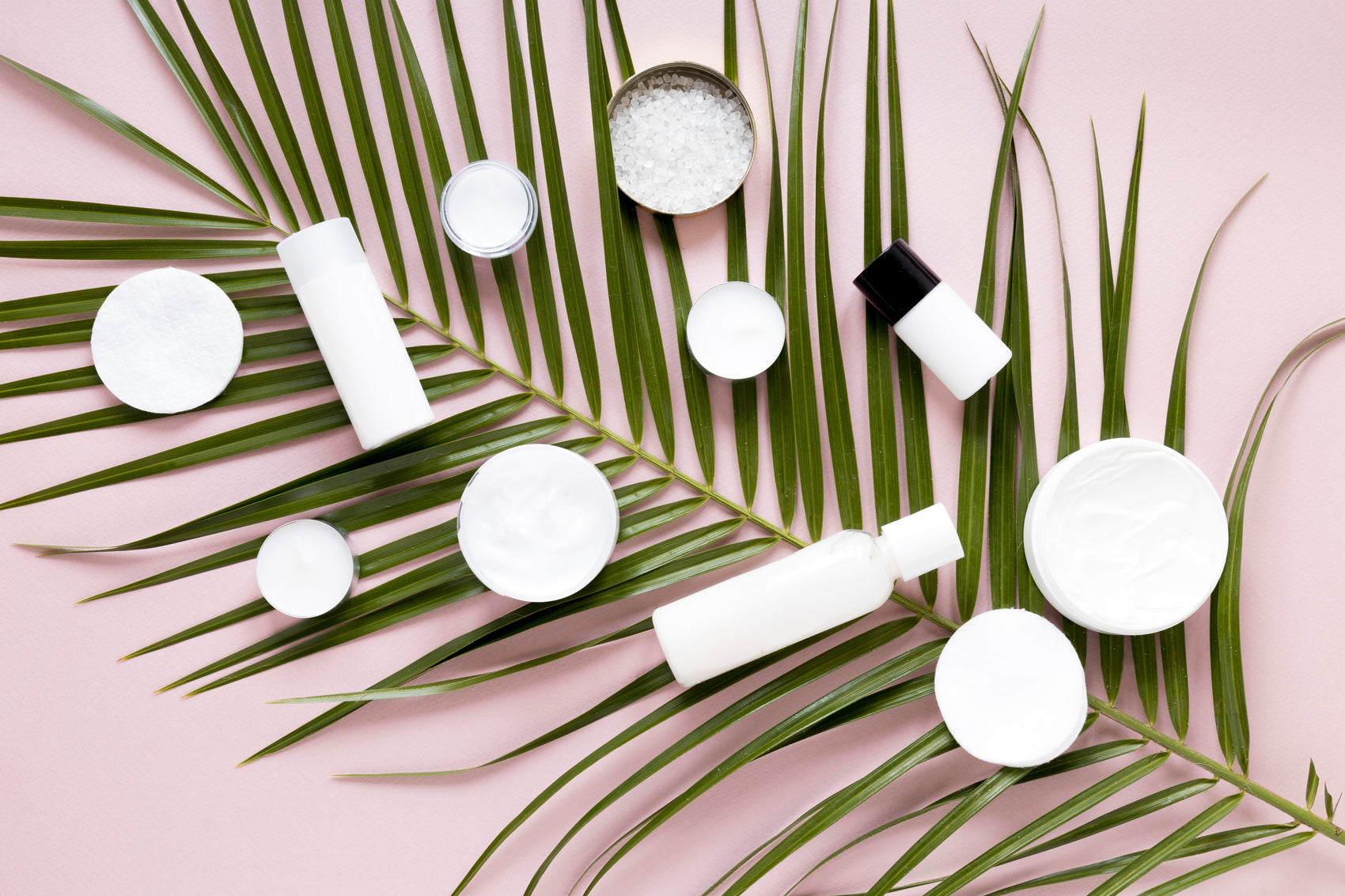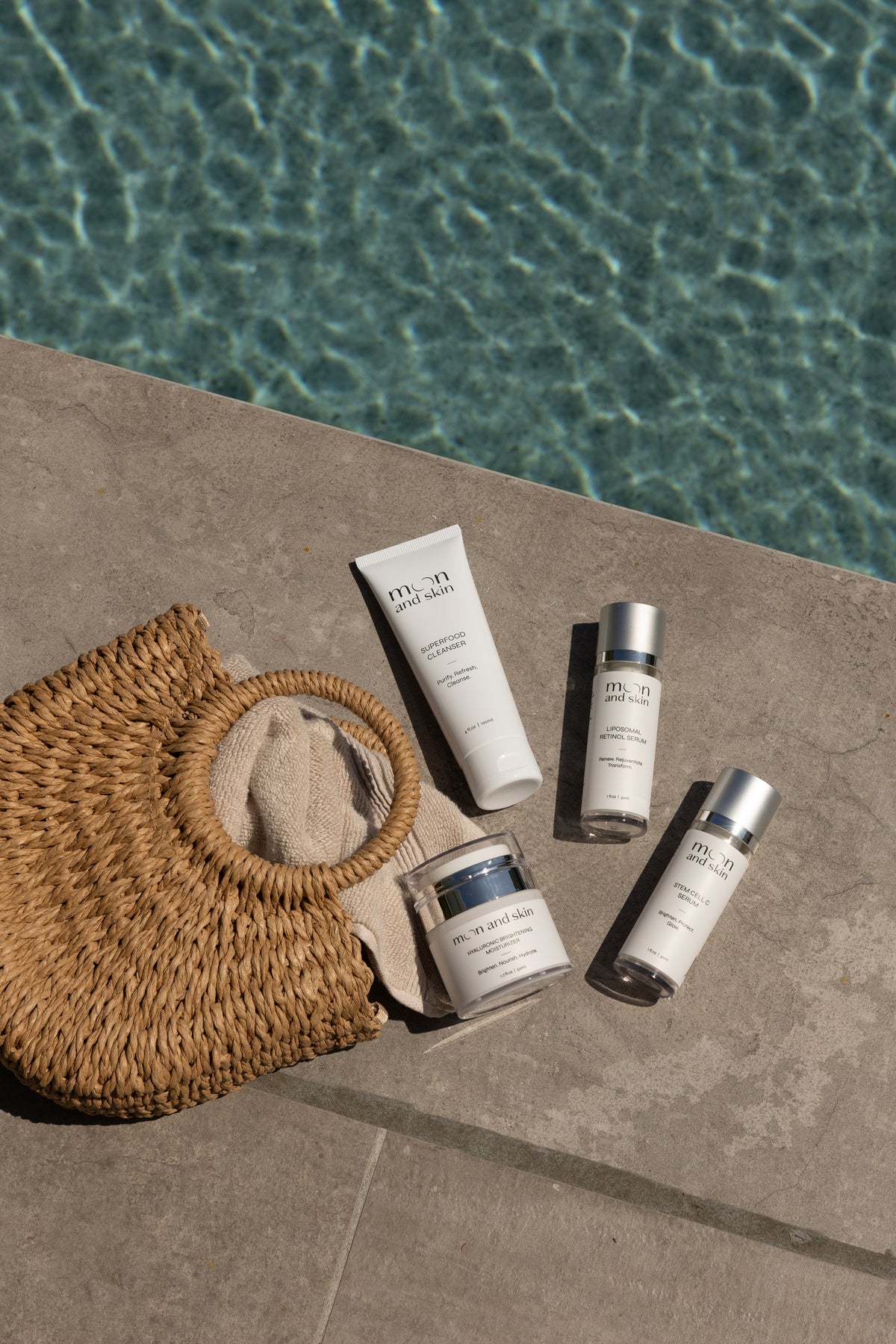Table of Contents
Introduction
Have you ever wondered why your skin feels parched, even after applying moisturizer? You’re not alone! Many of us grapple with the challenge of keeping our skin hydrated, especially in dry or changing climates. One ingredient that has gained considerable attention for its hydrating properties is glycerin. Known for its remarkable ability to draw moisture, glycerin can be a game-changer in your skincare routine.
In this blog post, we'll explore the significance of glycerin in skincare, specifically its benefits, how to use it effectively, and when it’s best to incorporate it into your routine. As we navigate the world of skincare, we understand that choosing the right ingredients can feel overwhelming. That's why our mission at Moon and Skin is to provide you with clean, thoughtful formulations that support your skin through every phase of life.
Let’s dive into the world of glycerin and discover how it can transform your skincare game!
What is Glycerin?
Glycerin, also known as glycerol, is a naturally occurring compound that is either derived from vegetable oils or animal fats. It is a clear, colorless, and odorless liquid that is sweet to taste. In the realm of skincare, glycerin is classified as a humectant, which means it has the unique ability to draw moisture from the environment and deeper layers of skin into the outer layer, keeping it hydrated and plump.
But why is glycerin so effective? According to a 2016 study, glycerin is considered one of the most effective humectants available, surpassing others like hyaluronic acid and urea. This makes it a staple ingredient in many moisturizers, cleansers, and serums.
Key Benefits of Glycerin for Your Skin
Glycerin offers a multitude of benefits, making it a versatile ingredient for all skin types:
- Deep Hydration: Glycerin draws moisture from both the air and the deeper layers of your skin, providing long-lasting hydration.
- Improved Skin Barrier: It helps strengthen the skin's natural barrier, preventing moisture loss and protecting against environmental irritants.
- Soothes and Calms: Glycerin has anti-inflammatory properties that can soothe irritated skin and reduce redness.
- Non-Comedogenic: It is non-comedogenic, meaning it won’t clog your pores, making it suitable for oily and acne-prone skin.
- Enhances Skin Texture: Regular use of glycerin can improve skin texture, leaving it soft and smooth.
When to Use Glycerin on Your Face
Knowing when to incorporate glycerin into your skincare routine is essential for maximizing its benefits. Here are some key moments to consider:
1. As Part of Your Daily Routine
Glycerin can be used both in the morning and evening as part of your daily skincare routine.
- Morning: Start your day by using a glycerin-infused moisturizer to keep your skin hydrated throughout the day. For an added boost, consider applying our Hyaluronic Brightening Moisturizer, which combines glycerin with powerful brightening ingredients.
- Evening: At night, when your skin undergoes repair and regeneration, applying glycerin helps maintain hydration levels. You can layer it under your regular moisturizer or use it in a serum. Our Stem Cell C Serum is a great option, as it combines the benefits of glycerin with potent antioxidants.
2. In Dry Conditions
In low-humidity environments, glycerin can pull moisture from the deeper layers of your skin, which may lead to dehydration if used incorrectly. To avoid this:
- Dilute Glycerin: Always dilute glycerin with water or a hydrating toner before applying it directly to your skin. A mix of glycerin and rose water can create a powerful hydrating mist that you can use throughout the day.
3. After Cleansing
Using glycerin post-cleansing can help restore moisture that may have been stripped away during washing.
- Apply Glycerin After Cleansing: After using a gentle cleanser like our Superfood Cleanser, apply a glycerin serum or mix glycerin with your moisturizer. This will help lock in the moisture right after your skin has been cleaned.
4. As a Makeup Primer
Glycerin can also serve as an excellent base for makeup.
- Mix with Primer: By mixing a few drops of glycerin with your primer or foundation, you can achieve a dewy, hydrated look that lasts all day.
5. In DIY Face Masks
Glycerin is a fantastic ingredient to include in homemade face masks.
- DIY Recipe: Combine glycerin with honey and yogurt for a hydrating face mask that can be applied for 15-20 minutes before rinsing off. This will leave your skin feeling nourished and refreshed.
How to Use Glycerin Effectively
Now that we know when to use glycerin, let’s discuss how to use it effectively in your skincare routine:
Step 1: Perform a Patch Test
Before introducing glycerin into your routine, it’s crucial to perform a patch test. Apply a small amount of diluted glycerin to an inconspicuous area of your skin (like your inner forearm) and wait 24-48 hours to check for any adverse reactions.
Step 2: Dilute Glycerin
Always dilute glycerin with water or a hydrating toner. A good ratio is one part glycerin to four parts water.
Step 3: Apply to Damp Skin
For optimal absorption, apply diluted glycerin to slightly damp skin. This helps to lock in moisture more effectively.
Step 4: Layer Your Products
After applying glycerin, follow up with a moisturizer to seal in hydration. Using our Hyaluronic Brightening Moisturizer is an excellent choice, as it complements glycerin’s hydrating properties.
Step 5: Monitor Your Skin
Keep an eye on how your skin reacts to glycerin. If you notice any irritation, redness, or excessive dryness, reduce the frequency of use or switch to a different product.
Common Concerns and Myths About Glycerin
As with any skincare ingredient, there are common concerns and myths surrounding glycerin. Let's address a few:
Myth 1: Glycerin Closes Pores
This is a myth. Glycerin is non-comedogenic and does not clog pores. In fact, it can help keep your pores clean and hydrated.
Myth 2: Glycerin is Only for Dry Skin
While glycerin is fantastic for dry skin, it benefits all skin types, including oily and combination skin. Its lightweight texture hydrates without adding greasiness.
Myth 3: Pure Glycerin is Safe to Apply Directly
While glycerin is generally safe, applying it in its pure form can sometimes lead to irritation, especially in dry conditions. Always dilute it before applying to your face.
Myth 4: Glycerin Causes Breakouts
Glycerin does not cause breakouts; in fact, it can help balance moisture levels in your skin, reducing the likelihood of acne.
Conclusion
Incorporating glycerin into your skincare routine can provide tremendous benefits, from deep hydration to improved skin texture. By understanding when to use glycerin and how to apply it effectively, you can unlock its full potential for maintaining healthy, radiant skin.
At Moon and Skin, we are committed to providing you with clean, thoughtful formulations that support your skin throughout its journey. We invite you to explore our Bundle & Save collection to build a complete skincare routine tailored to your needs.
Let’s celebrate your skin's journey together—starting with the incredible benefits of glycerin!
FAQ
What is glycerin, and how does it benefit the skin?
Glycerin is a natural humectant that draws moisture into the skin from the environment and deeper layers. It hydrates, improves skin texture, and strengthens the skin barrier.
Can I use pure glycerin on my face?
It's best to dilute glycerin with water or a hydrating toner before applying it to your face to avoid potential irritation.
How often should I use glycerin?
You can use glycerin daily, but monitor your skin's response. If irritation occurs, reduce the frequency or discontinue use.
Is glycerin suitable for all skin types?
Yes, glycerin is non-comedogenic and suitable for all skin types, including oily, dry, and sensitive skin.
Can I mix glycerin with other products?
Absolutely! Glycerin can be mixed with your moisturizer, serum, or DIY masks for enhanced hydration.







